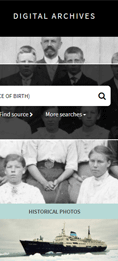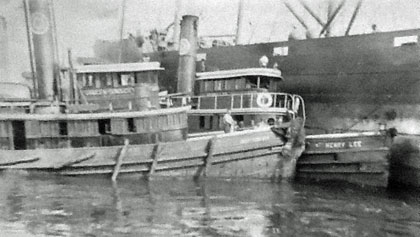 The hardest task for many genealogists is tracking their immigrant ancestor back to his original home area in the old country in order to find records. In this article I will walk you through the process of getting across the ocean to Norway using all my favorite resources.
The hardest task for many genealogists is tracking their immigrant ancestor back to his original home area in the old country in order to find records. In this article I will walk you through the process of getting across the ocean to Norway using all my favorite resources.
The newest online Norwegian archives have had a modernizing face lift but the functionality is the same as described in my 2015 post. It is the single most important site for finding your immigrant ancestor. However there are many others you would use first, to try to figure out where in Norway to look. All of Norway is not impossible with an exact birth date, but a rough location makes it easier.
One of the problems with searching for your Norwegian ancestors is the surname issue. Back in Norway, people were known by their father’s name and their farm name until the early 1900s. Plus the farm name would change when they moved. For some city dwellers a fixed surname came earlier, around the 1880s. There are a number of articles about Norwegian naming listed in my Norwegian genealogy article on the menu above (or click here).
 Most Norwegians picked either the farm name, a variation of the farm name, or their patronymic for their surname once in America. So although there are many Lars Olsens and Ole Hansons, there are also Tweets (from Tveit) and Challeys (from Tjelle) and Hollands (from Haaland) to name a few anglicized farm names among my cousins. One of my great-grandfathers created Wold from Torgevollen and another great-grandad created the surname Lee. How he got that from farm Skjold is a complete mystery, although family lore is that it was done so that the name would fit around a tugboat chimney.
Most Norwegians picked either the farm name, a variation of the farm name, or their patronymic for their surname once in America. So although there are many Lars Olsens and Ole Hansons, there are also Tweets (from Tveit) and Challeys (from Tjelle) and Hollands (from Haaland) to name a few anglicized farm names among my cousins. One of my great-grandfathers created Wold from Torgevollen and another great-grandad created the surname Lee. How he got that from farm Skjold is a complete mystery, although family lore is that it was done so that the name would fit around a tugboat chimney.
Finding the immigration record can be key, so it is best to start at Ancestry.com or FamilySearch or MyHeritage and locate your ancestor in the 1900, 1910, or 1920 census in order to get their year of immigration.